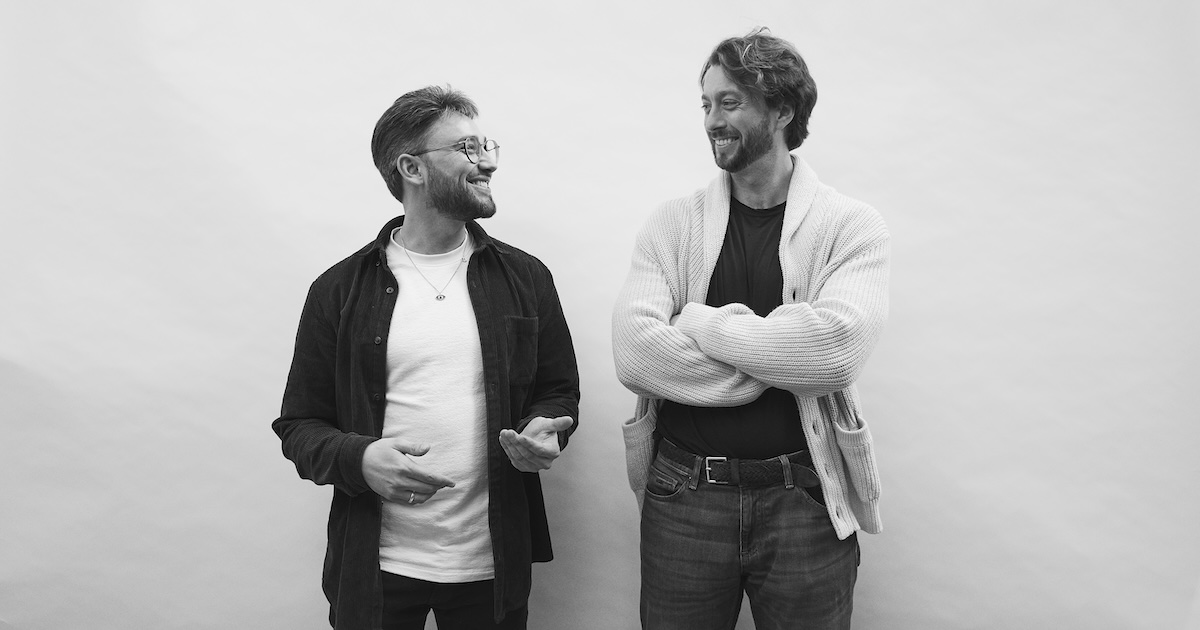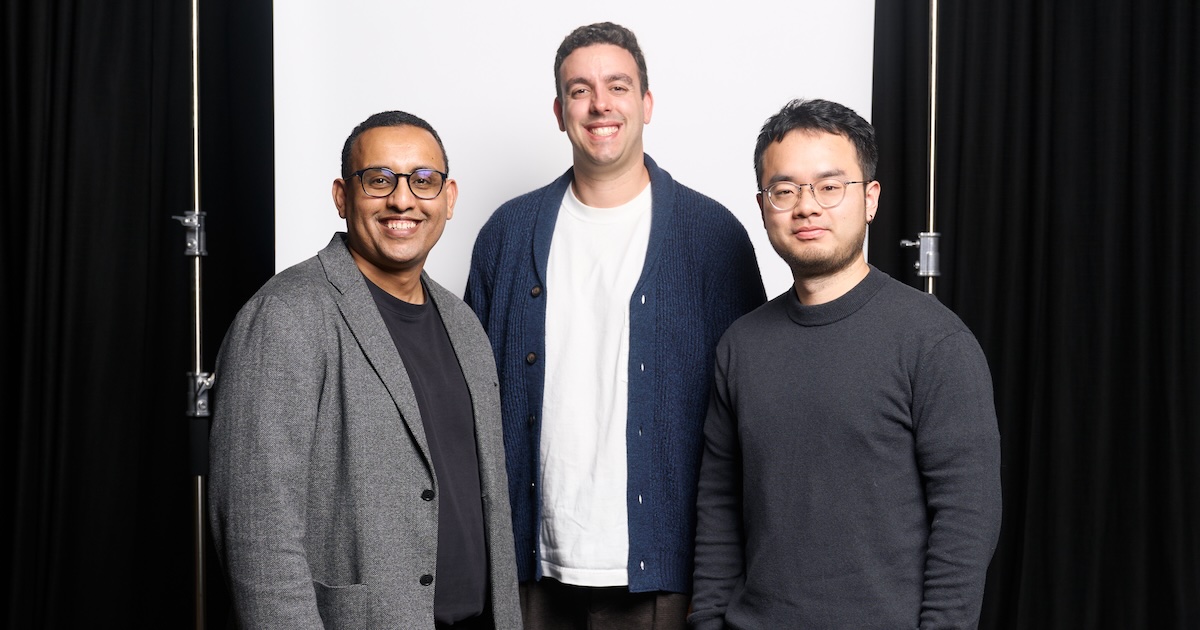.avif)
Exploring New Creative Frontiers: Into the Metaverse with Ivan Medrano
We talk all things metaverse, diversity in art, creativity and digital fashion with two-time Protostar alumni, Ivan Medrano
We believe that creativity is the metaskill that makes everything possible. It unlocks potential and can lead to a life full of meaning, richness and purpose.
This belief led us to creating our philanthropic arm, The Blackbird Foundation. While Blackbird Ventures invests in founders building high growth technology companies; Blackbird Foundation inspires young people to follow their passions and curiosities, embrace their individuality, and create projects that shape the world around them.
Why do we do it? We believe that everyone is creative – we are all born with the innate instinct to create. Everything great to ever exist in the world is the downstream of creativity – of ideas, of the manifestation of this instinct to create. But while we’re all born creative, not everyone gets the opportunity to exercise their creativity or explore their passions.
And honestly, we think that’s a problem. That’s why we started Protostars – a microgrant program where we give $1000 grants to young people in AU/NZ, aged between 16-25. The only requirement? They have to be working on a passion project. Through Protostars, we hope to unlock young people’s true potential through belief, creativity and community.
One day these young people might start their own companies, or they might go on to start social movements, create meaningful art, direct an Academy Award winning film, win a Nobel Prize or be a Pulitzer Prize writer – the possibilities are magic and endless.
We’ve now had 4 successful cohorts and the level of creativity, passion and invention that has come out of Protostars has been absolute magic. We are truly building a portfolio of wild hearts and next-gen worldbuilders.
But we can’t – and don’t want to – continue to do this alone.
By sharing these individual Protostars' stories, we invite you to join us on this journey.
Together, we can supercharge our mission to unleash creativity in young people. Through the stories we share, we hope to encourage and inspire you unleash your own creativity, whether you’re a founder, operator, investor, creative or startup enthusiast. We believe that unlocking your creativity will be the catalyst for the most vibrant startup ecosystem in the world.
So we’d like to put a spotlight on one of our recent Protostars, Ivan Medrano.
Introducing Ivan
Ivan is a young and emerging creative visionary exploring the intersection of technology, fashion and art. He’s been featured in internationally renowned publications like Paper Magazine and Vogue Philippines, and his designs have been featured at London Fashion Week and SHOWStudio. By day he’s a freelance graphic designer at Artsect NFT Gallery London – where he produces visual content as a digital design innovator, a role encompassing art direction and digital graphic design.
Outside of Ivan’s freelance work lies his passion project: Independent Variable – a digital fashion magazine that he started earlier this year, which aims to pluralise applications of 3D design within the fashion industry. Through Independent Variable, Ivan explores how digital fashion can be used to tell stories, be subversive, and showcase culture and identity in the same way that traditional fashion practice can.
You can find Ivan on Instagram, TikTok, and LinkedIn. He also has an online store where he sells prints of his artwork.

Blackbird : The Independent Variable is a digital fashion magazine that you launched in April this year. Your goal behind it is to expand people’s understanding and awareness of digital fashion. Can you talk a little bit about why that’s so important to you?
Ivan Medrano: “The Independent Variable is something I’m really proud of. I think, at the moment, digital fashion is viewed as very soulless and one-dimensional. A lot of the work I see lacks a lot of nuance. I was filming a video the other day, and I was thinking about how every single article I see about digital fashion talks about it as if it’s just a spectacle. Like, ‘oh, look at this new thing! It’s so cool and transformative! And that’s where the conversation ends. We never talk about how digital fashion can be empowering and how people are using it to tackle complex ideas like culture.
The Independent Variable is an example of how fashion can be used to tell stories, reference things, be subversive, showcase culture and identity – all the things that regular fashion practice can do.”
Blackbird You mentioned before that digital fashion can be a way to showcase culture and identity. How does your cultural identity influence your work?
Ivan Medrano:: “In the literal sense, I’ve been really inspired by the Filipino connection to nature. Last year I did a lot of visual research exploring different islands and collecting seashells, driftwood and rocks. Something I also explored a lot through my work with Vogue Philippines was variations and interpretations of the terno, a traditional Filipino dress. I got to reinterpret Filipino codes and cultural motifs through digital design. It made me reflect on how we can view culture in an innovative way, where we can share things with each other and become richer as an art community.”
I’d love to explore this idea of digital fashion opening up opportunities for artists. You’ve done a couple of virtual exhibitions to display your work now. Did you always set out to display your art in virtual exhibitions?
Ivan Medrano: “In Protostars Season Two, my project was a virtual exhibition – I’d never done one before. I had been thinking about doing an exhibition for some time, and with Protostars, I thought it might be a chance to do a physical exhibition. But I sat down and really thought about it, and I started to think about where I was going to exhibit. How would I market and promote the event so people would come. My Instagram audience isn’t my local audience. How was I going to get collaborators to transport their work so it could be displayed? There were just so many roadblocks, and to add to it, I wasn’t an established artist yet. I didn’t have the awards or accolades at the time to back me up.
And these things block so many other creatives from displaying their art. People of colour, people from low socio-economic backgrounds, people who don’t live in major cultural districts. So I was like, why don’t I do a virtual exhibition accessible to everyone through the Metaverse?
I’m really excited about how we can use the metaverse to challenge ethnographic practices within the art world. Within our institutions, there are so many instances in which people of colour have been put into narrative boxes.”
Blackbird: How do the metaverse and virtual exhibitions fit into more diverse stories being told?
Ivan Medrano: “Yeah, so that’s what I mean about ethnocentric art practices. Institutions so heavily push the agenda that the most important stories minorities have to tell are those that aim to counter ideas of colonialism and racism. Art is intrinsically political, but there always seems to be great pressure on people of colour to only produce work that is deemed ‘socially productive’. We always have to be activists; it feels like nothing else we have to share matters in these dominantly white spaces. The metaverse can help us challenge these practices that circle around Western value systems. How can we use the metaverse as something to platform and celebrate art from diverse artists and communities?
With the metaverse, there isn’t a curator or curation team you have to appeal to. There are many exhibition and virtual space platforms that you can take advantage of to display your work or use to put together a group show. I used ‘New Art City’. No driving boxes of artwork across cities, and no application entrance fees. Just spaces dedicated to you that you can distribute virtually to guests around the world. I’m really excited about how things like this can eliminate and dissolve borders around meaningful art engagement and distribution.”
Blackbird: So what was your first experience with the metaverse?
Ivan Medrano: “An argument that I have is that the metaverse comprises multi-decade-long relationship that Gen Z’s have been having with the internet and online spaces. I remember making my first avatars on Jumpstart and Poptropica, spending hours in these virtual spaces after school, or playing during lunch in the computer room. I was around twelve.
Think about the Minecraft servers people started with their friends during the first batches of lockdowns, how multiplayer gaming stood in as a mode of socialisation among friend groups who were isolated from one another. We all turned to virtual spaces for escapism, for comfort, for the warmth of human connection.
Blackbird: I think people have conflated the metaverse with Meta and Facebook, which is a huge barrier to understanding it.
Ivan Medrano: “Yeah, like it’s not just a token term. I think the metaverse refers to all of the virtual spaces in which we come together and connect with avatars or representations of ourselves.”
Blackbird: How then do you think Gen Z or Gen Alpha’s relationship with the metaverse differs from older generations?
Ivan Medrano: “I think the metaverse is a utility for older people. It’s a tool to sell things like NFTs. But for young people, we were raised and fully socialised online. The internet became another facet of our lived experiences. Like another room in our house, we live and socialise in virtual spaces. And that’s why it bothers me when people so heavily commercialise the metaverse and put it into a box.”
Blackbird: Love that! Okay so I really want to end this by talking about creativity. You’re obviously incredibly creative. What was the first thing you remember creating?
Ivan Medrano: “I remember making books in second grade. I’d illustrate pictures on coloured paper, mainly featuring video game characters like Mario and Luigi, and write narrative lines above them with the little literacy I had back then. The pages would be laminated and bound together; I’d flip through them on the class shelf.
I’ve carried the tradition of making art books and filling up sketchbooks throughout elementary and art school. I think I’ve come full circle with the digital fashion magazine (Independent Variable) that I’m working on now.”
Blackbird: And finally, what’s a spicy take you’ve got on creativity?
Ivan Medrano: “Great work requires a degree of creative cognition. I’m not referring to how much experimentation or research or refining you do, but instead how you make creative decisions. The instinctual or ‘innate’ way you express yourself through work. This, like any skill, can be exercised and built, even by using the practices I just mentioned. However, I see it as something of utmost importance.
In my opinion, creatives who have a solid creative cognition: a solid sense of self and direction, make the most substantial art.”
You can support Ivan and his work here.
You can read the uncut version of this interview here: Exploring New Creative Frontiers: Into the Metaverse with Ivan Medrano
Protostars is a program run by the Blackbird Foundation. We give young people from Australia and Aotearoa, aged 18-25, $1k grants to work on their passion projects. Find out more about it here.








